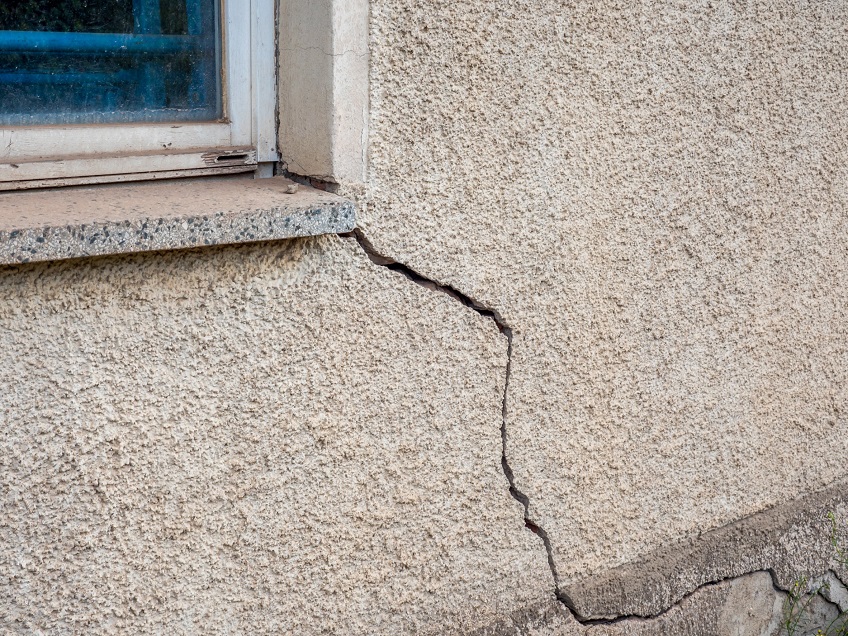
Flooding negatively impacts concrete in many ways. Although concrete is a durable material that can withstand water, it’s still porous and flooding is a different story. This spring, houses across the Wasatch Front may see some flooding, so it’s a good idea to understand how that excessive water may affect your concrete and what you should do about it.
Flooding causes damage to foundations and concrete slabs from the high-pressure force it exerts on the structure. This force can cause cracks or aggravate existing cracks. Flash floods carry debris, which causes extensive structural damage and sometimes even separates walls from foundations. Slower flooding that seeps into the foundation is likely more of what we’ll see in the Salt Lake Valley this spring, which can damage walls, flooring, electrical components, and more. Mold is a major concern with flooding, and you want to ensure you tackle that issue before you handle any repairs. Concrete is already a porous material, add in excessive water and cracking and you have a recipe for disaster. Large cracks create unsafe structural instability overall.
Sometimes it’s not clear whether your foundation has been affected by flooding. Some ways to check yourself is to look for cracks in door frames or around windows, or if your windows or doors stop opening and closing properly. Inspect your walls and your ceilings for new or expanding cracks and walk along your floors to see if you notice sloping. Additionally, take a walk around the outside of your home and look for sinking or newly formed cracks. If you suspect foundation damage but you don’t see anything, still call a professional like Lift Right Concrete to come check your home thoroughly.
It's common for smaller, non-structural issues to occur with heavy water exposure to concrete, such as spalling. Water and temperature factors both play a role in spalling, but it can be often remedied with a concrete overlay.
If you have damaged concrete from water, you’ll need to get it fixed as quickly as possible. Patching the cracks will be necessary to get rid of all that extra air that is making your concrete vulnerable and weak. In extreme cases, the concrete may need to be replaced. If your concrete has settled, lifting it is generally a great option. At Lift Right Concrete, we know that damaged concrete isn’t just an aesthetic issue, it is also very dangerous. Professional lifting services can bring stability to your foundation again. Flooding will quickly speed up the deterioration of concrete. If large cracks or joints have formed, you will need to get those sealed to prevent further damage from water getting into those cracks.
To prevent flooding from happening, ensure your sump pump is working, check your window wells for signs of leaking, clear your gutters of debris, and get sandbags prepared if you’re in a flood-prone area. If you do get flooding in your home, contact Lift Right Concrete to make sure the issue is repaired correctly.